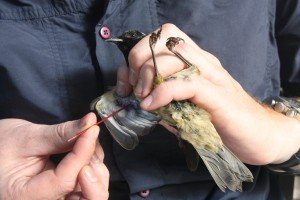British scientists who have become the first researchers to document key characteristics for the success of invading parasites, have also cast new light on the spread of avian malaria in New Zealand birds.
Their study, published today in Ecology Letters, identifies the factors influencing the success of parasites unintentionally introduced to new environments.
The Zoological Society of London (ZSL) researchers, including New Zealand scientist Dr. John Ewen, studied more than 800 exotic and native host birds across the North Island and detected parasite infection by extracting DNA from blood and analysing it to look at specific segments of genes.

They then looked in more detail at the characteristics of the parasites they found to see if they had features that made them more likely to be present in bird hosts in New Zealand.
“We have found a surprisingly high diversity of malaria parasites in New Zealand, including two found nowhere else in the world, says Dr Ewen.
“Most parasites we found are recent arrivals, probably from infected birds released by humans. They tend to be widespread and common strains, which can infect a broad range of bird hosts.
“These findings will help us understand the what, when and how of exotic parasite introductions globally.”
International movement of parasites is an increasing problem, as many introduced parasites flourish in new environments and some can even be invasive – but little is known about the traits which enable parasites to survive and thrive.
The London Zoo scientists and colleagues are continuing to work on risk assessments for New Zealand’s native birds and on understanding why some environments are more likely to be invaded by parasites.
British experience is that birds can develop resistance to malaria, and in the UK most infected birds do survive, though loss of red blood cells may leave them more susceptible to other diseases.
In New Zealand – where sparrows, thrushes and blackbirds are thought to spread avian malaria without being badly affected themselves – the disease is known to have killed mohua or yellowheads at Orana Wildlife Park in Canterbury.
And concerns have been raised that the impact of avian malaria in this country could follow in the footsteps of another island nation, Hawaii, where the parasite played a key role in the extinction of about half of the endemic bird species there.